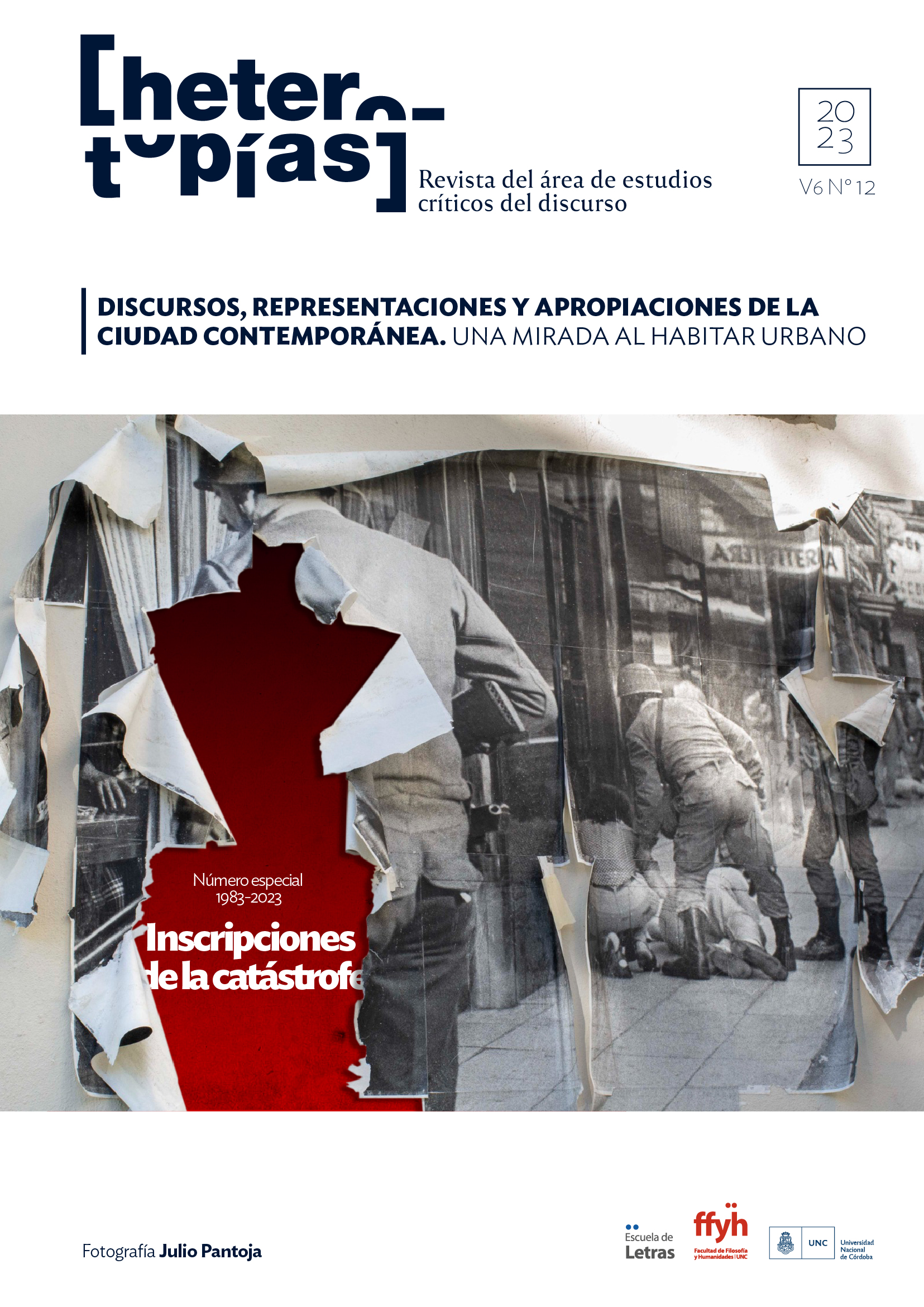"Fort Apache": Paradigm Analysis of an urban intervention.
Main Article Content
Abstract
We begin this work by examining the historical-disciplinary context, subsequently
emphasizing the representations that the discipline built at that particular moment on the
production of social housing, for which we will resort to the techniques provided by cultural
history. We will then address the characterization of Ejército de los Andes neighborhood,
known as Fuerte Apache, trying to discriminate between objective statements and facts,
recognizing those shortcomings of a housing plan that arose from this set of uncritically
accepted beliefs and procedures.
Downloads
Article Details

This work is licensed under a Creative Commons Attribution-NonCommercial-ShareAlike 4.0 International License.
Those authors who have publications with this journal, accept the following terms: Those authors who have publications with this journal, accept the following terms:
a. The authors will keep their copyright and guarantee to the journal the right of first publication of their work, which will be simultaneously subject to the Creative Commons Attribution - Non-Commercial - Share Alike (by-nc-sa) Attribution License; no commercial use of the original work or any derivative works is allowed, the distribution of which must be done with a license equal to the one that regulates the original work.
b. Authors may adopt other non-exclusive license agreements for the distribution of the published version of the work (e.g., deposit it in an institutional telematic archive or publish it in a monographic volume) provided that the initial publication in this journal is indicated.
c. Authors are allowed and recommended to disseminate their work through the Internet (e.g. in institutional telematic archives or on their website) before and during the submission process, which may lead to interesting exchanges and increase the number of citations of the published work. (See The effect of open access).
References
Artusa, M. (2005). Fuerte Apache: barrio privado. Revista viva, 27 de marzo de 2005.
Baudizzone, M.; Varas, A. (1974).Vivienda y realidad de la Vivienda, Summa (71), 40-42.
Ballent, A. (2004). “Learning from Lima”, Block, (6), 86-95.
Banham, R. (1968). “Una arquitectura de ensamble” Cuadernos Summa - Nueva Visión: Enciclopedia de la arquitectura de hoy (3). El grupo Archigram, 25-28
Barnes, B. (1986). Kuhn y las ciencias sociales. México: Fondo de Cultura Económica
Borthagaray, J. M. (1986). Panorama de acción de vivienda en la Argentina. A/mbiente (48), 14-21
Chartier, R. (1992) El mundo como representación. Estudios sobre historia cultural. Barcelona: Gedisa
Cravino, A. (2004) Barrio Ejército De Los Andes ("Fuerte Apache"): Evaluación Crítica De Una Intervención Urbana. VI Jornadas de Sociología, UBA
Cravino. A. (2012). Enseñanza de arquitectura, una aproximación histórica 1901-1955. La inercia del modelo Beaux Arts. Buenos Aires: SCA/Nobuko
Fleck, L. (1986). La génesis y el desarrollo de un hecho científico. Madrid: Alianza
Frampton, K. (1981). Historia crítica de la Arquitectura Moderna. Barcelona: Editorial Gustavo Gili.
Frampton, K. (1975). Evolución del concepto de vivienda 1870-1970. Summa (86), 14-17.
Grichener, S. (1969) PREVI-PERU. Un intento en el más alto nivel. Summa (32), 42-57
Goldemberg, J. (1973a). D.U. (Diseño Urbano): El compromiso de construir ciudades. Summa (63) 69-71
Goldemberg, J. (1973b). Historia de nosotros. Summa (64/65), 28-71
Gouldner, A. (1973). La crisis de la sociología occidental. Buenos Aires: Amorrortu
Kuhn, T. S. (1971). La estructura de las revoluciones científicas. Buenos Aires: Fondo de Cultura Económica
Landau, R. (1969). Nuevos caminos de la arquitectura inglesa. Barcelona: Blume
Leoz, R. (1969). Redes y ritmos espaciales. Madrid-Barcelona: Blume https://dokumen.tips/documents/rafael-leoz-redes-y-ritmos-espaciales.html?page=1
Maki, F. (1964) Investigations in Collective Forms. St. Louis: Washington University. https://library.wustl.edu/wp-content/uploads/2015/04/maki-entire.pdf
Müller, L., & Parera, C. (2016). Arquitectura de sistemas y programas sociales en la Argentina desarrollista: Del optimismo a lo posible. Arquitecturas del Sur, 34(49), 32-41.
Oszlak, O. (1991). Merecer la ciudad. Los pobres y el derecho al espacio urbano. Buenos Aires: Cedes-Humanitas,
Staff (1972) Conjunto habitacional “Ciudadela”. Summa (49), 38-43 Taller de Arquitectura. (1968). Hacia una formalización de la Ciudad en el Espacio, Barcelona: Blume
TUPAU. (1967) ¿Qué es la arquitectura? Antología Pedagógica, Buenos Aires: FAU-UBA
Turner, J., H. Caminos, H., & Steffian, J. J. (1969). Urban dwelling environments: An elementary survey of settlements for the study of design determinants. M.I.T. Report 16. Cambridge (Mass.): MIT Press
Varsavsky, O. (1969). Ciencia, política y cientificismo. Buenos Aires: Centro Editor de América Latina
Waisman, M. (1973). Hacer es la consigna Summa (64/65), 24-28.
Waisman; M. (1981) La ambigüedad controlada. Summa (169), 26-29
Waisman, M. (1984). Una década revolucionaria: 1960/1970. Summa (200/201), 58-63
